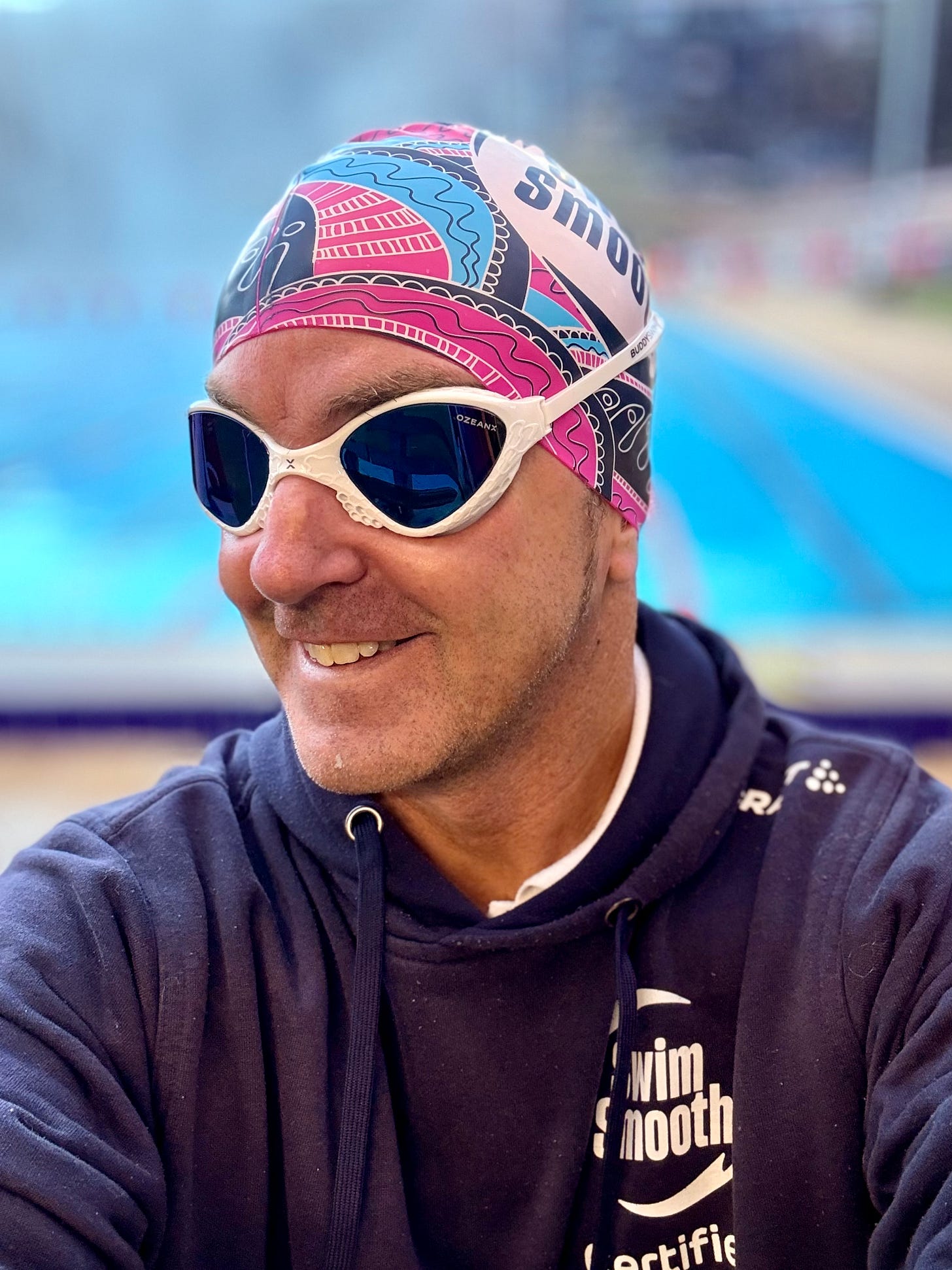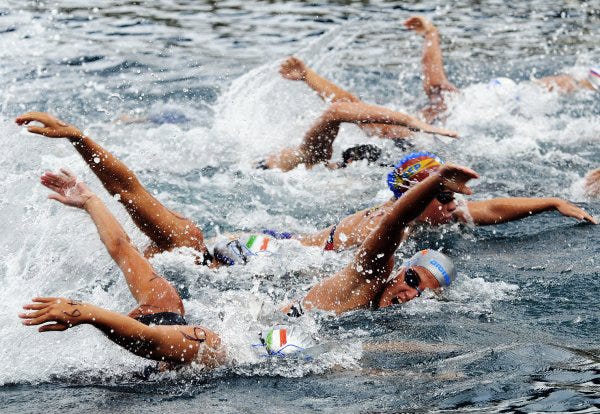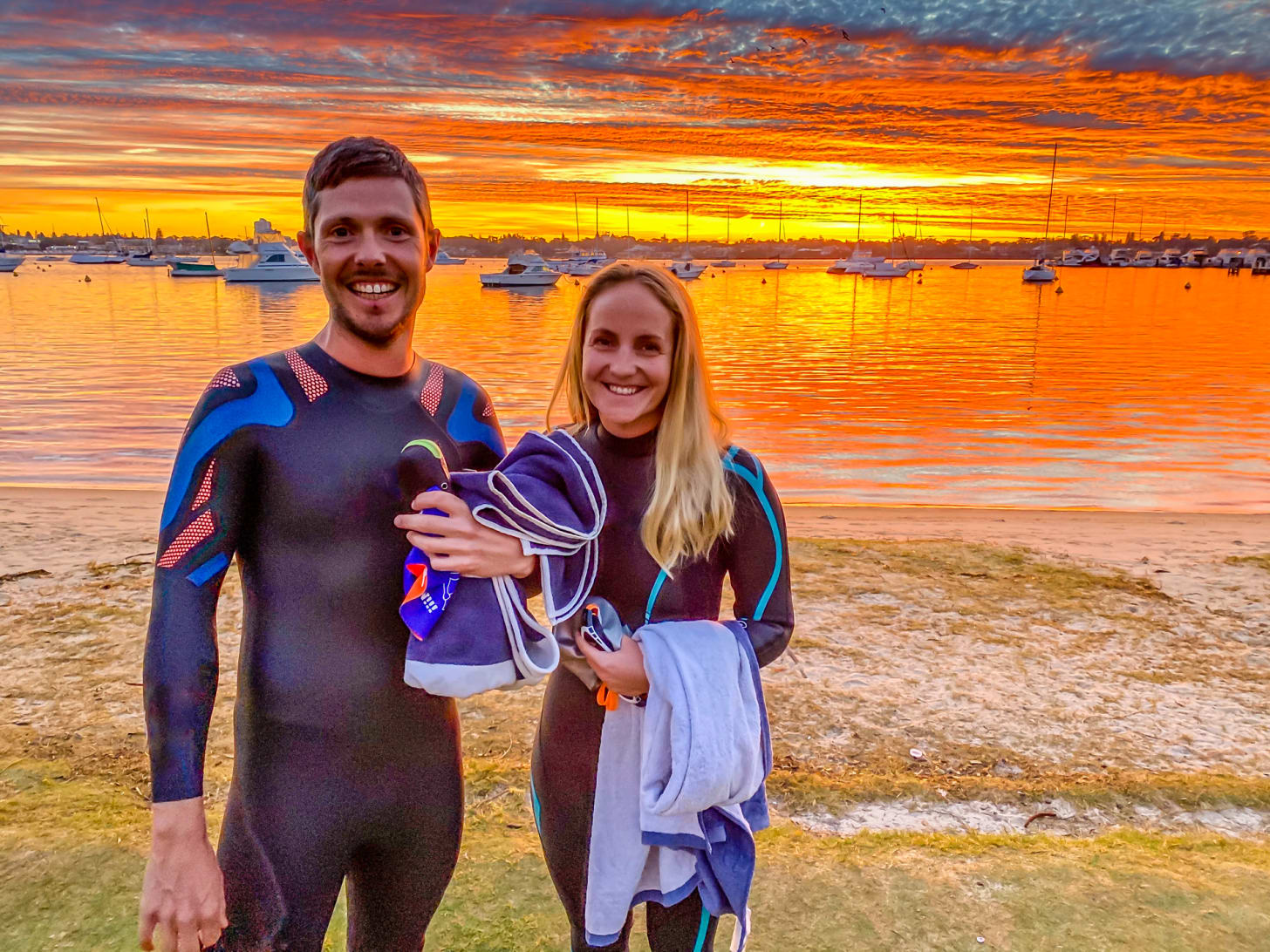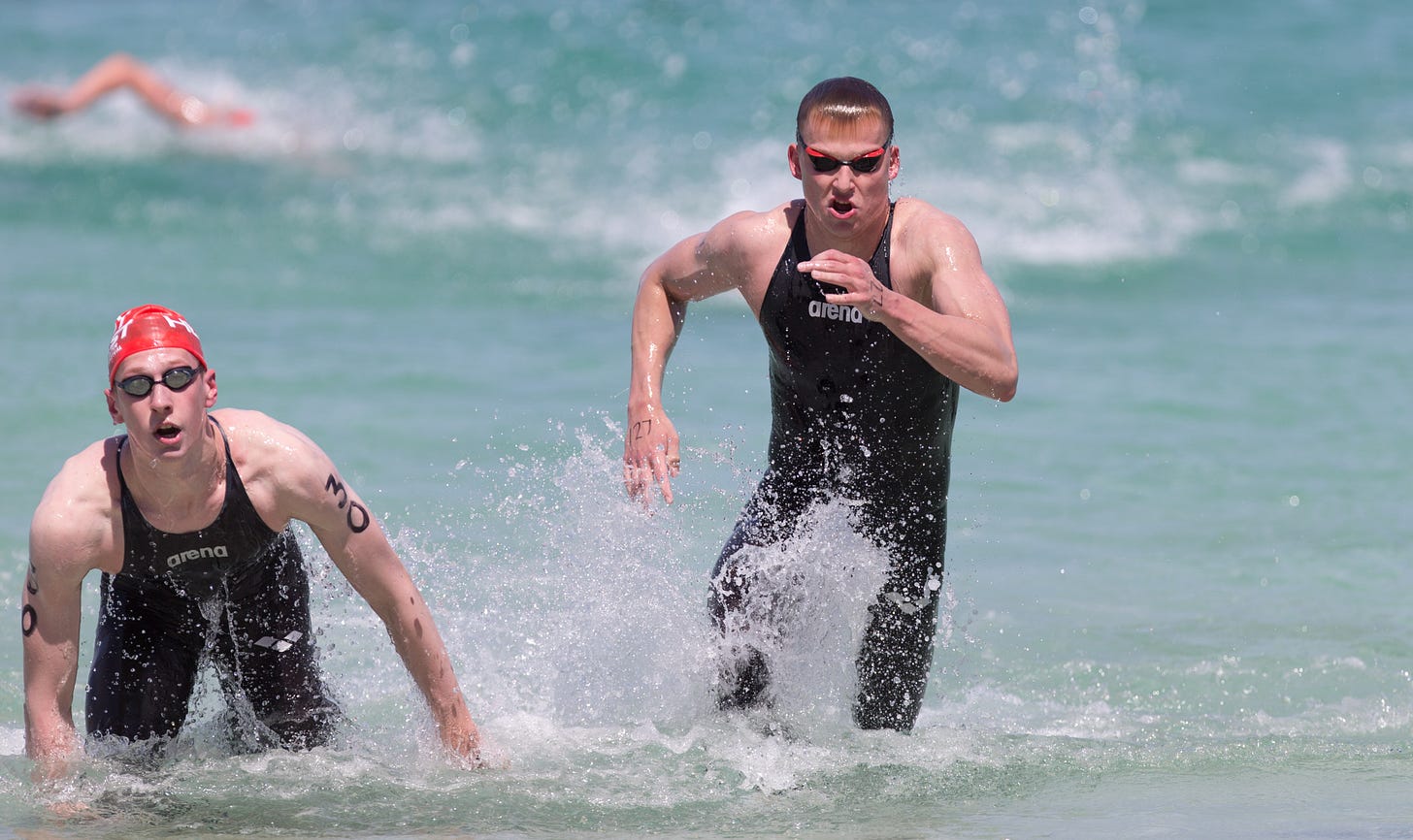🧘🏻♂️ Keep Calm and Swim On!
9 Tips for What to Do When Race Day Goes Wrong
Hey Swimmers,
You’ve made it to the start line, your goggles are fog-free, the wetsuit's zipped up, and the nerves are settling. Then the signal sounds—and something goes wrong.
It might be something small, like a leaking goggle. Or bigger—like a full-blown panic attack in cold water. These moments can define a swim for better or worse. But here's the thing: you can prepare for them.
This isn’t about expecting disaster. It’s about knowing what to do when the unexpected happens—so you can stay calm, adapt, and still swim your best.
Tip # 1: Goggle Leaks or Breaks

Leaks are annoying, but fixable. Try:
Sculling with one hand while lifting your head and draining the water with the other.
Rolling onto your back to adjust more easily without stopping.
If your goggles break mid-swim and you don’t have spares (or time), keep going without them. It’s uncomfortable, but trainable. Practise it in low-stakes sessions so it doesn’t throw you off completely on race day.
Tip # 2: Swimming Cap Slips Off

Many events require you to finish wearing your official cap, especially if it includes a timing chip. If it starts to slide:
Pull it back into place immediately.
Fetch it if it comes off in sight—especially in cold water swims.
To prevent this:
– Don’t condition your hair 2–3 days before.
– Fit your cap over dry (or slightly damp) hair.
– Use zinc cream or even gaffer tape if needed in choppy conditions.
Tip # 3: Wetsuit Issues
If your wetsuit feels tight or constrictive, it's likely not seated correctly. Try:
Letting a small amount of water in through the neck to improve mobility.
Adjusting your stroke to a straighter arm recovery to reduce neoprene resistance.
If your suit starts to flood with water, check your zip or collar. Pressing out excess water pre-race can also help, as can wearing a tri-suit underneath.
Tip # 4: You Get Hit, Kicked, or Boxed In
It happens. Often unintentionally.
Ignore light knocks—they’re part of pack swimming.
If someone’s consistently tapping your toes, drop behind them and draft—their mistake can be your gain.
If boxed in and feeling claustrophobic, either hold your line calmly or move wide to clean water. You can also surface dive underneath and re-emerge clear.
Tip # 5: You Panic or Go Off Too Fast
Panic is most common in the first 300m—often from breath-holding in cold water or the chaos of a mass start.
To recover:
Exhale slowly, like sighing.
Roll onto your back for a moment, breathe, then continue.
Going out too hard? Settle into a sustainable rhythm within the first minute. If you're already suffering, find some feet to draft and regroup mentally.
Tip # 6: Physical Discomfort: Cramp, Stitch, Overheating
Cramps: Stretch the affected area briefly and swim with relaxed form.
Stitch: Breathe deeply and avoid holding your breath. Don’t eat too close to the race.
Overheating: Let water into your wetsuit through the neck every 5–10 minutes.
Tip # 7: Weather or Conditions Turn Ugly
Waves, chop, current—it’s all part of the game. Adapt your stroke:
Use a straighter, higher recovery.
Increase stroke rate to maintain momentum.
Keep your head still and sight calmly—don’t thrash.
The smoothest stroke isn’t always the most effective one in rough water.
Tip # 8: You Get Dropped or Disoriented
If you lose the feet you were drafting, commit to another 20–30 strokes to try to latch back on.
If you feel dizzy, sight key landmarks before the start, wear earplugs, and avoid rolling the head too much.
If you feel sick, stay calm and ease your pace. Drink some water at the next feed if possible.
Tip # 9: Forgotten Kit or Last-Minute Problems
Still at the venue? Ask the organiser to make an announcement. Most open water communities are incredibly helpful.
If all else fails, offer to volunteer, support, or marshal—you’ll still learn and be part of the experience.
Final Word: Don’t Chase Perfection—Manage the Moment
Things go wrong. It’s how you respond that counts. Break the swim into small wins: the next buoy, the next dozen strokes, the next breath. Focus on what you can control and let the rest pass.
Next week, we’ll head out of the water and onto dry land with simple, effective land-based training strategies to strengthen your swimming.
Let us know how your swimming is going in the comments:
Your Coach, Paul.









Great tips. The panic is real in that crazy washing machine swimming. I've been there hit, kicked and even had someone swim over the top of me.